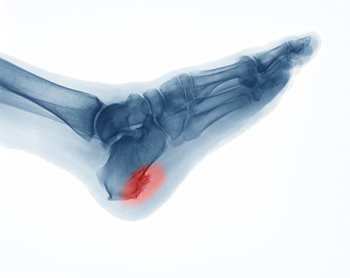Buying Foot-Friendly Athletic Shoes
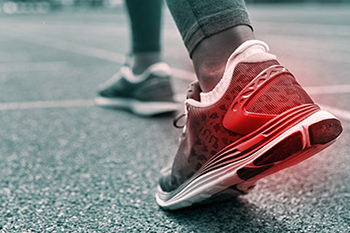
Shoes that do not fit well or those with high heels are a common cause of foot pain and can also lead to chronic conditions affecting other parts of the body. Athletes can prevent injury and pain by paying attention to a few tips that include making sure their shoes fit well and are supportive, selecting shoes that are appropriate for the activity to be done, and making any necessary adjustments to shoes prior to working out. It is important to pay close attention to shoe size and measure feet prior to trying shoes on. Feet swell as the day wears on, and shoe sizes vary across and between brands. Function and fit should be given precedence over fashion. Running shoes are different than hiking shoes and streetwear shoes are not the best for training. Different athletic shoes are developed to protect the areas of the feet that are most stressed by the activity. Shoe inserts, pads, or cups can be used in shoes to relieve chronic pain symptoms. If you enjoy running and want to continue your sport more comfortably, it is suggested you have your gait analyzed by a podiatrist. This healthcare practitioner can also observe any special adjustments needed for your shoes and advise on the best shoes for you.
If you are a runner, wearing the right running shoe is essential. For more information, contact Harvey Jacobs, DPM from Quality Foot Care Center. Our doctor can provide the care you need to keep you pain-free and on your feet.
Choosing the Right Running Shoe for Your Foot Type
To increase performance and avoid the risk of injury, it is important to choose the right running shoe based on your foot type. The general design of running shoes revolves around pronation, which is how the ankle rolls from outside to inside when the foot strikes the ground.
- Neutral runners are able to choose from a wide variety of shoes, including minimalist shoes or even going barefoot.
- Runners who overpronate, or experience an over-abundance of ankle rolling, should choose shoes that provide extra motion control and stability.
- Runners who underpronate, or supinate, have feet that have high arches and lack flexibility, preventing shock absorption. They require shoes with more flexibility and cushion.
If you have any questions please feel free to contact our office located in Somerset, NJ . We offer the newest diagnostic and treatment technologies for all your foot and ankle needs.
Symptoms That May Accompany Athlete’s Foot
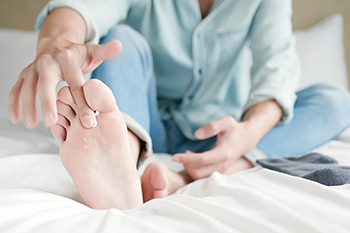
The common fungal infection known as athlete’s foot can be quite uncomfortable. This fungal infection affects the skin on the feet, and can cause severe itchiness between the toes. Other symptoms can include dry skin and redness on the bottom of the feet. In severe cases, the toenails may be affected, and toenail fungus may develop. This fungus lives and thrives in warm and moist environments, including shower room floors, locker rooms, public swimming pools, and surrounding areas. These are areas where many people walk barefoot, and the fungus can enter the body through small cuts in the bottom of the feet. Athlete's foot is considered to be contagious and effective prevention methods can include wearing appropriate shoes while in these areas and refraining from sharing shoes, socks, and towels. Many people who have athlete's foot seek prompt medical attention, which is beneficial in successfully curing this condition. If you are afflicted with athlete's foot, please consult a podiatrist for treatment.
Athlete’s Foot
Athlete’s foot is often an uncomfortable condition to experience. Thankfully, podiatrists specialize in treating athlete’s foot and offer the best treatment options. If you have any questions about athlete’s foot, consult with Harvey Jacobs, DPM from Quality Foot Care Center. Our doctor will assess your condition and provide you with quality treatment.
What Is Athlete’s Foot?
Tinea pedis, more commonly known as athlete’s foot, is a non-serious and common fungal infection of the foot. Athlete’s foot is contagious and can be contracted by touching someone who has it or infected surfaces. The most common places contaminated by it are public showers, locker rooms, and swimming pools. Once contracted, it grows on feet that are left inside moist, dark, and warm shoes and socks.
Prevention
The most effective ways to prevent athlete’s foot include:
- Thoroughly washing and drying feet
- Avoid going barefoot in locker rooms and public showers
- Using shower shoes in public showers
- Wearing socks that allow the feet to breathe
- Changing socks and shoes frequently if you sweat a lot
Symptoms
Athlete’s foot initially occurs as a rash between the toes. However, if left undiagnosed, it can spread to the sides and bottom of the feet, toenails, and if touched by hand, the hands themselves. Symptoms include:
- Redness
- Burning
- Itching
- Scaly and peeling skin
Diagnosis and Treatment
Diagnosis is quick and easy. Skin samples will be taken and either viewed under a microscope or sent to a lab for testing. Sometimes, a podiatrist can diagnose it based on simply looking at it. Once confirmed, treatment options include oral and topical antifungal medications.
If you have any questions, please feel free to contact our office located in Somerset, NJ . We offer the newest diagnostic and treatment technologies for all your foot care needs.
Conditions Associated with Heel Spurs
Painful conditions such as plantar fasciitis and Achilles tendonitis occur when connective tissue repeatedly pulls on the calcaneus (heel) bone. Because of the stress these conditions place on ligaments and muscles around the heel bone, hard calcium deposits may develop over time on the bottom or back of the calcaneus. Pain from a heel spur may be hard to differentiate from the associated plantar fasciitis or Achilles tendonitis. People with flat feet, high arches, gait issues, or who spend a lot of time on their feet, or are obese, can be more prone to developing heel spurs. Also, middle-aged people who participate in athletic activities that put a good amount of stress on the feet may have an increased risk. If you are experiencing any pain on the bottom or back of your heel, contact a podiatrist for a full examination.
Heel spurs can be incredibly painful and sometimes may make you unable to participate in physical activities. To get medical care for your heel spurs, contact Harvey Jacobs, DPM from Quality Foot Care Center. Our doctor will do everything possible to treat your condition.
Heels Spurs
Heel spurs are formed by calcium deposits on the back of the foot where the heel is. This can also be caused by small fragments of bone breaking off one section of the foot, attaching onto the back of the foot. Heel spurs can also be bone growth on the back of the foot and may grow in the direction of the arch of the foot.
Older individuals usually suffer from heel spurs and pain sometimes intensifies with age. One of the main condition's spurs are related to is plantar fasciitis.
Pain
The pain associated with spurs is often because of weight placed on the feet. When someone is walking, their entire weight is concentrated on the feet. Bone spurs then have the tendency to affect other bones and tissues around the foot. As the pain continues, the feet will become tender and sensitive over time.
Treatments
There are many ways to treat heel spurs. If one is suffering from heel spurs in conjunction with pain, there are several methods for healing. Medication, surgery, and herbal care are some options.
If you have any questions feel free to contact our office located in Somerset, NJ . We offer the latest in diagnostic and treatment technology to meet your needs.
Types of Athlete’s Foot
 Athlete’s foot, also known as tinea pedis, is a very contagious fungal infection that causes the feet to become dry and flaky. Tinea pedis thrives and spreads in warm and moist environments such as showers, gym locker rooms, and swimming pools. There are three common types of athlete’s foot. The most common type of athlete’s foot is known as chronic interdigital athlete’s foot, which usually results in scaling and fissures. This type of athlete’s foot is usually caused by tight footwear that creates a warm and moist environment for the fungus to thrive in. The second type of athlete’s foot, known as chronic scaly athlete’s foot, is often associated with fungal nail infections and causes the skin to become dry, scaly, and tender. This type of athlete’s foot tends to spread from person to person. Lastly, acute vesicular athlete’s foot is the least common type of athlete’s foot and is indicated by painful blisters on the sole or top of the foot. If you believe that you have athlete’s foot, consulting with a podiatrist for a proper diagnosis and treatment method is strongly suggested.
Athlete’s foot, also known as tinea pedis, is a very contagious fungal infection that causes the feet to become dry and flaky. Tinea pedis thrives and spreads in warm and moist environments such as showers, gym locker rooms, and swimming pools. There are three common types of athlete’s foot. The most common type of athlete’s foot is known as chronic interdigital athlete’s foot, which usually results in scaling and fissures. This type of athlete’s foot is usually caused by tight footwear that creates a warm and moist environment for the fungus to thrive in. The second type of athlete’s foot, known as chronic scaly athlete’s foot, is often associated with fungal nail infections and causes the skin to become dry, scaly, and tender. This type of athlete’s foot tends to spread from person to person. Lastly, acute vesicular athlete’s foot is the least common type of athlete’s foot and is indicated by painful blisters on the sole or top of the foot. If you believe that you have athlete’s foot, consulting with a podiatrist for a proper diagnosis and treatment method is strongly suggested.
Athlete’s Foot
Athlete’s foot is often an uncomfortable condition to experience. Thankfully, podiatrists specialize in treating athlete’s foot and offer the best treatment options. If you have any questions about athlete’s foot, consult with Harvey Jacobs, DPM from Quality Foot Care Center. Our doctor will assess your condition and provide you with quality treatment.
What Is Athlete’s Foot?
Tinea pedis, more commonly known as athlete’s foot, is a non-serious and common fungal infection of the foot. Athlete’s foot is contagious and can be contracted by touching someone who has it or infected surfaces. The most common places contaminated by it are public showers, locker rooms, and swimming pools. Once contracted, it grows on feet that are left inside moist, dark, and warm shoes and socks.
Prevention
The most effective ways to prevent athlete’s foot include:
- Thoroughly washing and drying feet
- Avoid going barefoot in locker rooms and public showers
- Using shower shoes in public showers
- Wearing socks that allow the feet to breathe
- Changing socks and shoes frequently if you sweat a lot
Symptoms
Athlete’s foot initially occurs as a rash between the toes. However, if left undiagnosed, it can spread to the sides and bottom of the feet, toenails, and if touched by hand, the hands themselves. Symptoms include:
- Redness
- Burning
- Itching
- Scaly and peeling skin
Diagnosis and Treatment
Diagnosis is quick and easy. Skin samples will be taken and either viewed under a microscope or sent to a lab for testing. Sometimes, a podiatrist can diagnose it based on simply looking at it. Once confirmed, treatment options include oral and topical antifungal medications.
If you have any questions, please feel free to contact our office located in Somerset, NJ . We offer the newest diagnostic and treatment technologies for all your foot care needs.
How to Minimize Sore Feet From High Heels
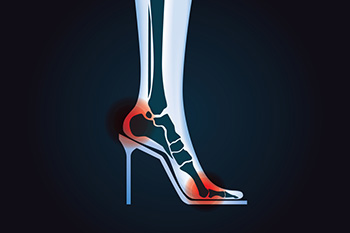
There are many people who choose to frequently wear high heels, often producing sore feet at the end of the day. It is a common side effect that may be remedied by wearing high heels that have a lower heel. Some of the conditions that may occur from wearing high heels can be quite uncomfortable, including blisters, corns, and bunions. Additionally, the heel may be affected by plantar fasciitis, which can happen from having inadequate support in the arch area. Soaking the feet in warm water may help to relieve existing swelling and aching muscles. The feet can benefit from performing specific strengthening exercises, consisting of calf and heel stretches. People who continue to enjoy wearing high heels may also benefit from choosing a shoe that is well-cushioned and has maximum support for the entire foot. If you would like more information about what kind of high heels to wear that may help to minimize foot pain, please consult with a podiatrist.
High heels have a history of causing foot and ankle problems. If you have any concerns about your feet or ankles, contact Harvey Jacobs, DPM from Quality Foot Care Center. Our doctor can provide the care you need to keep you pain-free and on your feet.
Effects of High Heels on the Feet
High heels are popular shoes among women because of their many styles and societal appeal. Despite this, high heels can still cause many health problems if worn too frequently.
Which Parts of My Body Will Be Affected by High Heels?
- Ankle Joints
- Achilles Tendon – May shorten and stiffen with prolonged wear
- Balls of the Feet
- Knees – Heels cause the knees to bend constantly, creating stress on them
- Back – They decrease the spine’s ability to absorb shock, which may lead to back pain. The vertebrae of the lower back may compress.
What Kinds of Foot Problems Can Develop from Wearing High Heels?
- Corns
- Calluses
- Hammertoe
- Bunions
- Morton’s Neuroma
- Plantar Fasciitis
How Can I Still Wear High Heels and Maintain Foot Health?
If you want to wear high heeled shoes, make sure that you are not wearing them every day, as this will help prevent long term physical problems. Try wearing thicker heels as opposed to stilettos to distribute weight more evenly across the feet. Always make sure you are wearing the proper shoes for the right occasion, such as sneakers for exercising. If you walk to work, try carrying your heels with you and changing into them once you arrive at work. Adding inserts to your heels can help cushion your feet and absorb shock. Full foot inserts or metatarsal pads are available.
If you have any questions please feel free to contact our office located in Somerset, NJ . We offer the newest diagnostic and treatment technologies for all your foot and ankle needs.
Foot Stress Fracture Symptoms
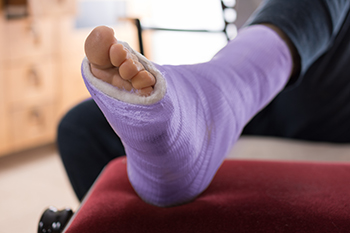
When an individual suffers a stress fracture, they essentially have developed tiny cracks in the bone, often due to repetitive or prolonged pressure. There are a number of different symptoms that are characteristic of a stress fracture. Namely, if you suffer from a stress fracture, you may develop bruising on the skin in the affected area. Typically, this might involve discoloration of some sort around the skin. The skin, for example, may appear to have a red, blue, or purple tint. Additionally, stress fractures may create poignant, localized pain at the site of the fracture. This pain can be worse when putting weight on the feet. Many individuals suffer from stress fractures—if you are one of them, consult with a podiatrist today.
Activities where too much pressure is put on the feet can cause stress fractures. To learn more, contact Harvey Jacobs, DPM from Quality Foot Care Center. Our doctor can provide the care you need to keep your pain free and on your feet.
Dealing with Stress Fractures of the Foot and Ankle
Stress fractures occur in the foot and ankle when muscles in these areas weaken from too much or too little use. The feet and ankles then lose support when walking or running from the impact of the ground. Since there is no protection, the bones receive the full impact of each step. Stress on the feet can cause cracks to form in the bones, thus creating stress fractures.
What Are Stress Fractures?
Stress fractures occur frequently in individuals whose daily activities cause great impact on the feet and ankles. Stress factors are most common among:
- Runners
- People affected with Osteoporosis
- Tennis or basketball players
- Gymnasts
- High impact workouts
Symptoms
Pain from the fractures occur in the area of the fractures and can be constant or intermittent. It will often cause sharp or dull pain with swelling and tenderness. Engaging in any kind of activity which involves high impact will aggravate pain.
If you have any questions please feel free to contact our office located in Somerset, NJ . We offer the newest diagnostic and treatment technologies for all your foot and ankle needs.
Gout Pain Can Be Managed
Benefits of Orthotics
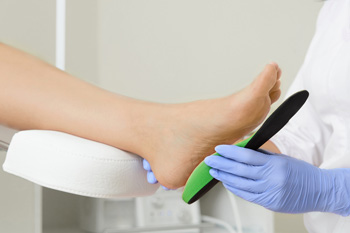
Orthotics are worn inside shoes to correct various structural issues and treat medical conditions. Orthotics can be soft or rigid, both providing similar benefits. Soft orthotics are made with soft materials for extra cushioning. Rigid orthotics are made from harder materials, like carbon fiber or plastic. Orthotics can relieve foot and leg pain. Many symptoms requiring orthotics originate in the lower back and involve nerves that control function and movement in the legs and feet. Conditions causing foot and leg pain include a herniated disc, sleeping in an awkward position, or standing for prolonged times at work. Orthotics allow an individual to be able to maintain the correct alignment of the feet and legs, lessen pain, and prevent it from worsening. Orthotics can also help with managing minor foot deformities, absorbing shock from high-impact exercises, and correcting over-pronation, which is when the arch of the foot collapses inwards. If you think you might benefit from orthotics or want to know more about them, it is suggested that you consult with a podiatrist.
If you are having discomfort in your feet and would like to try orthotics, contact Harvey Jacobs, DPM from Quality Foot Care Center. Our doctor can provide the care you need to keep you pain-free and on your feet.
What Are Orthotics?
Orthotics are inserts you can place into your shoes to help with a variety of foot problems such as flat feet or foot pain. Orthotics provide relief and comfort for minor foot and heel pain but can’t correct serious biomechanical problems in your feet.
Over-the-Counter Inserts
Orthotics come in a wide variety of over-the-counter inserts that are used to treat foot pain, heel pain, and minor problems. For example, arch supports can be inserted into your shoes to help correct overarched or flat feet, while gel insoles are often used because they provide comfort and relief from foot and heel pain by alleviating pressure.
Prescription Orthotics
If over-the-counter inserts don’t work for you or if you have a more severe foot concern, it is possible to have your podiatrist prescribe custom orthotics. These high-quality inserts are designed to treat problems such as abnormal motion, plantar fasciitis, and severe forms of heel pain. They can even be used to help patients suffering from diabetes by treating foot ulcers and painful calluses and are usually molded to your feet individually, which allows them to provide full support and comfort.
If you are experiencing minor to severe foot or heel pain, it’s recommended to speak with your podiatrist about the possibilities of using orthotics. A podiatrist can determine which type of orthotic is right for you and allow you to take the first steps towards being pain-free.
If you have any questions please contact our office located in Somerset, NJ . We offer the newest diagnostic and treatment technologies for all your foot and ankle needs.
Cracked Heels and the Elderly
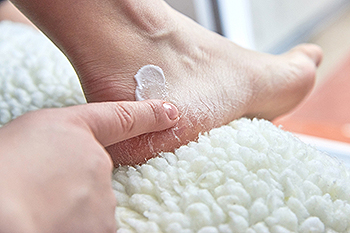
Throughout life, the soles of the feet bear the greatest force. The skin on the soles of the feet is thicker and has extra fat padding, but when it becomes dry it is prone to cracking. This is something that anyone can suffer from, but since padding on the feet gets worn and the gait changes due to age and disability, seniors are particularly prone to cracked heels. The condition can become serious, cause great discomfort, and hamper mobility. If one does not tend to the cracking, it can bleed and the chance of infections setting in is higher. Beyond dry skin, obesity, standing for long periods, and wearing open-back shoes can cause cracked heels too. Also, some diseases that can result in cracked heels include diabetes, peripheral arterial disease, and hypothyroidism. The key to treating cracked heels is reducing the pressure on the soles of the feet. Supportive, well-fitting shoes and heel pads may help. If you are elderly or caring for someone older, consult a podiatrist for advice on proper footwear as well as other remedies for cracked heels.
If the skin on your feet starts to crack, you may want to see a podiatrist to find treatment. If you have any concerns, contact Harvey Jacobs, DPM from Quality Foot Care Center. Our doctor can provide the care you need to keep you pain-free and on your feet.
Cracked Heels
It is important to moisturize your cracked heels in order to prevent pain, bleeding, and infection. The reason cracked heels form is because the skin on the foot is too dry to support the immense pressure placed on them. When the foot expands, the dry skin on the foot begins to split.
Ways to Help Heal Them
- Invest in a good foot cream
- Try Using Petroleum Jelly
- Ease up on Soaps
- Drink Plenty of Water
Ways to Prevent Cracked Heels
- Moisturize After Showering
- Skip a Shower
- Keep Shower Water Lukewarm
- Don’t Scrub Your Feet
If you are unsure how to proceed in treating cracked heels, seek guidance from a podiatrist. Your doctor will help you with any questions or information you may need.
If you have any questions, please feel free to contact our office located in Somerset, NJ . We offer the newest diagnostic and treatment technologies for all your foot care needs.
Can Ingrown Toenails Become Infected?

An ingrown toenail can be quite painful. It happens when the nail grows into the surrounding skin instead of over it. In severe cases, it may bleed and become infected, and it may be necessary to perform surgery for permanent relief. An ingrown toenail often affects the big toe, and in most cases, requires prompt medical treatment. Patients can experience symptoms that often include swelling, tenderness, and it may produce pus or fluid if it becomes infected. There are various reasons why people may notice an ingrown toenail developing. These can consist of wearing shoes that do not fit correctly, genetic reasons that can cause curved toenails, or if a toe injury has occurred. Relief may come from soaking the foot in warm water, followed by using a cotton swab to gently pull the skin away from the nail. This is considered to be a temporary fix until a podiatrist can be contacted. If you have developed this uncomfortable ailment, please make an appointment with this type of doctor who can effectively treat ingrown toenails.
Ingrown toenails can become painful if they are not treated properly. For more information about ingrown toenails, contact Harvey Jacobs, DPM of Quality Foot Care Center. Our doctor can provide the care you need to keep you pain-free and on your feet.
Ingrown Toenails
Ingrown toenails occur when a toenail grows sideways into the bed of the nail, causing pain, swelling, and possibly infection.
Causes
- Bacterial infections
- Improper nail cutting such as cutting it too short or not straight across
- Trauma to the toe, such as stubbing, which causes the nail to grow back irregularly
- Ill-fitting shoes that bunch the toes too close together
- Genetic predisposition
Prevention
Because ingrown toenails are not something found outside of shoe-wearing cultures, going barefoot as often as possible will decrease the likeliness of developing ingrown toenails. Wearing proper fitting shoes and using proper cutting techniques will also help decrease your risk of developing ingrown toenails.
Treatment
Ingrown toenails are a very treatable foot condition. In minor cases, soaking the affected area in salt or antibacterial soaps will not only help with the ingrown nail itself, but also help prevent any infections from occurring. In more severe cases, surgery is an option. In either case, speaking to your podiatrist about this condition will help you get a better understanding of specific treatment options that are right for you.
If you have any questions please feel free to contact our office located in Somerset, NJ . We offer the newest diagnostic and treatment technologies for all your foot and ankle needs.
More...
Diagnosing Stress Fractures
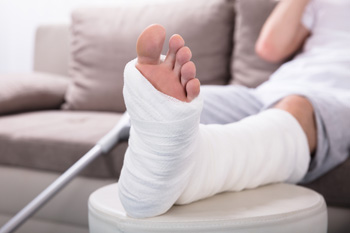 A stress fracture is a tiny crack in a bone that often occur in the feet as a result of overuse while playing sports or doing activities that involve running or jumping. Everyday activities can also lead to stress fractures in people with weakened bones. Pain, tenderness, and swelling are usually the first indications of a stress fracture. These symptoms should not be ignored, as stress fractures may worsen over time if left untreated. A podiatrist can diagnose a stress fracture by taking a thorough medical history, completing a physical examination, and ordering imaging studies such as X-rays or bone scans. If you suspect that you may have a stress fracture in your foot or ankle, please see a podiatrist.
A stress fracture is a tiny crack in a bone that often occur in the feet as a result of overuse while playing sports or doing activities that involve running or jumping. Everyday activities can also lead to stress fractures in people with weakened bones. Pain, tenderness, and swelling are usually the first indications of a stress fracture. These symptoms should not be ignored, as stress fractures may worsen over time if left untreated. A podiatrist can diagnose a stress fracture by taking a thorough medical history, completing a physical examination, and ordering imaging studies such as X-rays or bone scans. If you suspect that you may have a stress fracture in your foot or ankle, please see a podiatrist.
Activities where too much pressure is put on the feet can cause stress fractures. To learn more, contact Harvey Jacobs, DPM from Quality Foot Care Center. Our doctor can provide the care you need to keep your pain free and on your feet.
Dealing with Stress Fractures of the Foot and Ankle
Stress fractures occur in the foot and ankle when muscles in these areas weaken from too much or too little use. The feet and ankles then lose support when walking or running from the impact of the ground. Since there is no protection, the bones receive the full impact of each step. Stress on the feet can cause cracks to form in the bones, thus creating stress fractures.
What Are Stress Fractures?
Stress fractures occur frequently in individuals whose daily activities cause great impact on the feet and ankles. Stress factors are most common among:
- Runners
- People affected with Osteoporosis
- Tennis or basketball players
- Gymnasts
- High impact workouts
Symptoms
Pain from the fractures occur in the area of the fractures and can be constant or intermittent. It will often cause sharp or dull pain with swelling and tenderness. Engaging in any kind of activity which involves high impact will aggravate pain.
If you have any questions please feel free to contact our office located in Somerset, NJ . We offer the newest diagnostic and treatment technologies for all your foot and ankle needs.
What Is Intoeing?
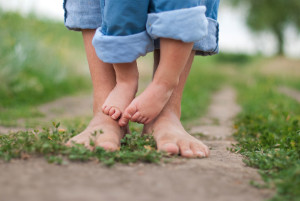
A healthy child has healthy feet, and so it is critical for parents to be aware of foot afflictions that may negatively impact their child’s feet. One of these conditions is known as intoeing, or pigeon toes, which occurs when a child’s toes point inwards. Intoeing can be present in infants from birth, as a result of twisted foot contortions within the uterus. Pigeon toes can also develop later in childhood, most likely due to movement of the tibia. In many cases, a child’s intoeing may actually correct itself over a period of time. However, if the condition persists and interferes with the child’s walking ability, then specific treatment options may be needed. These might include a surgical procedure or a variety of casts to correct the abnormality. If you are concerned about your child’s intoeing, please make an appointment with a trusted podiatrist today.
Making sure that your children maintain good foot health is very important as they grow. If you have any questions, contact Harvey Jacobs, DPM of Quality Foot Care Center. Our doctor can provide the care you need to keep you pain-free and on your feet.
Keeping Children's Feet Healthy
Having healthy feet during childhood can help prevent medical problems later in life, namely in the back and legs. As children grow, their feet require different types of care. Here are some things to consider...
Although babies do not walk yet, it is still very important to take care of their feet.
Avoid putting tight shoes or socks on his or her feet.
Allow the baby to stretch and kick his or her feet to feel comfortable.
As a toddler, kids are now on the move and begin to develop differently. At this age, toddlers are getting a feel for walking, so don’t be alarmed if your toddler is unsteady or ‘walks funny’.
As your child gets older, it is important to teach them how to take care of their feet.
Show them proper hygiene to prevent infections such as fungus.
Be watchful for any pain or injury.
Have all injuries checked by a doctor as soon as possible.
Comfortable, protective shoes should always be worn, especially at play.
If you have any questions please feel free to contact our office located in Somerset, NJ . We offer the newest diagnostic and treatment technologies for all your foot and ankle needs.
Sever’s Disease Is a Foot Condition and Not a Disease
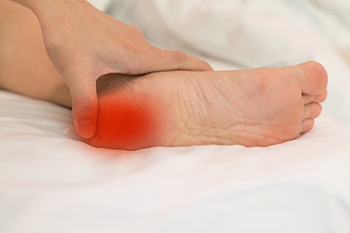
The number of young athletes is increasing steadily, and many are developing a foot condition that is known as Sever’s disease. It can be common among children and young teenagers, and it affects the growth plate in the heel. The majority of people are unaware that this particular foot ailment is not a disease, as the name implies, but is named for the individual who identified it. Most children will outgrow it, and will not have lingering effects from it as they get older. The main symptom with Sever’s disease is heel pain, and it can cause the inability to participate in chosen sports. This happens as a result of rapid bone growth, which can occur more quickly than growth of the tendons and muscles. This can cause the Achilles tendon—which connects the heel to the calf muscles—to tighten, resulting in swelling and tenderness. The pain and discomfort from Sever’s disease may be managed by wearing custom-made orthotics, and it is beneficial to stop the activity that caused the condition. If your child is active, and is limping from heel pain, it is advised that a podiatrist be consulted who can determine what the best treatment is.
Sever's disease often occurs in children and teens. If your child is experiencing foot or ankle pain, see Harvey Jacobs, DPM from Quality Foot Care Center. Our doctor can treat your child’s foot and ankle needs.
Sever’s Disease
Sever’s disease is also known as calcaneal apophysitis, which is a medical condition that causes heel pain I none or both feet. The disease is known to affect children between the ages of 8 and 14.
Sever’s disease occurs when part of the child’s heel known as the growth plate (calcaneal epiphysis) is attached to the Achilles tendon. This area can suffer injury when the muscles and tendons of the growing foot do not keep pace with bone growth. Therefore, the constant pain which one experiences at the back of the heel will make the child unable to put any weight on the heel. The child is then forced to walk on their toes.
Symptoms
Acute pain – Pain associated with Sever’s disease is usually felt in the heel when the child engages in physical activity such as walking, jumping and or running.
Highly active – Children who are very active are among the most susceptible in experiencing Sever’s disease, because of the stress and tension placed on their feet.
If you have any questions, please feel free to contact our office located in Somerset, NJ . We offer the newest diagnostic and treatment technologies for all your foot and ankle injuries.
